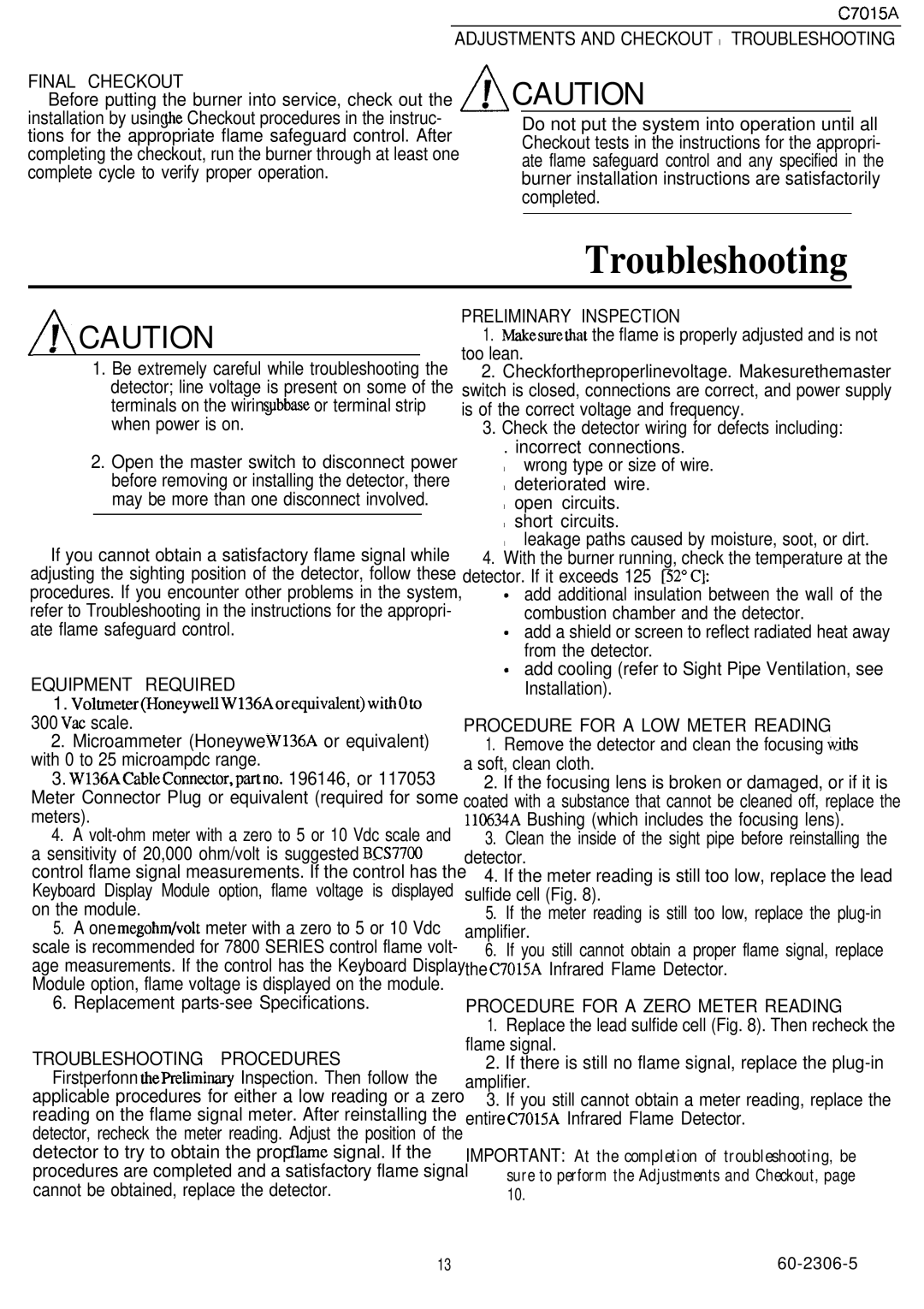C7015A specifications
The Honeywell C7015A is a versatile, high-performance electronic air temperature sensor designed for use in a variety of HVAC applications. Recognized for its reliability and advanced technology, this sensor ensures accurate temperature measurements, contributing to the overall efficiency of climate control systems.One of the main features of the C7015A is its exceptional sensing accuracy. The sensor utilizes a thermistor-type temperature sensing element, which allows for precise measurements across a broad temperature range. This precision is critical in maintaining the desired environmental conditions in residential, commercial, and industrial settings.
Another key characteristic of the Honeywell C7015A is its robust design. It is built to withstand a range of installation environments, ensuring longevity and consistent performance. The sensor comes with an IP rating that indicates its resistance to dust and moisture, making it suitable for various indoor and outdoor applications. Its durable construction ensures that it can operate effectively even in challenging conditions, enhancing its reliability.
The C7015A is designed for easy installation and integration into existing systems. It features standard electrical connections, which allows for straightforward wiring to a variety of control systems. Additionally, the sensor can be utilized with a multitude of Honeywell control units, enhancing system compatibility and flexibility. This interoperability is a significant advantage for HVAC technicians and engineers who require seamless integration with existing equipment.
Furthermore, the C7015A leverages advanced technologies such as digital signal processing to minimize noise and improve the accuracy of temperature readings. This technology ensures that the sensor can provide stable output even in fluctuating conditions, which is vital for precision climate control.
In summary, the Honeywell C7015A electronic air temperature sensor is characterized by its high accuracy, durable construction, ease of installation, and advanced technological features. These attributes make it a reliable choice for HVAC professionals aiming to optimize temperature control in various applications, ensuring both comfort and energy efficiency. The C7015A stands as a testament to Honeywell's commitment to quality and innovation in the field of environmental control solutions.

